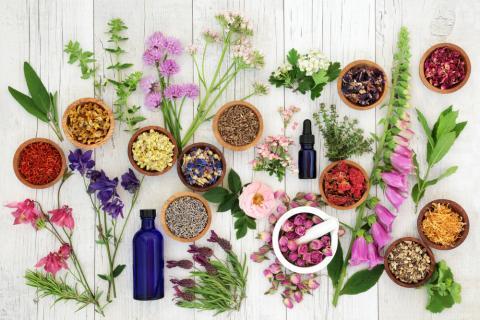
Here are some great oils and a few ideas for blends to get into the seasonal mode and lighten up the dark days. Essential oils are fun and useful to use any time of the year, but especially to spice life up in these (for some of us) colder and darker months. Many folks have holiday gatherings this time of year and oils can make one’s home even more inviting …
The Best Oils To Scent Your Home
Orange/Bergamot
Orange or bergamot oils are wonderfully uplifting scents and their sweetness seems to fit more with the season than the tangier citruses like lemon and lime (though that’s no reason not to use the latter two if you like them). Citrus oils are also great for anxiety and tension, which often accompany the holidays.
Clove
In some parts of the world, it’s a tradition to stick clove buds into an orange and hang it up for the scent—well, that and it’s quite pretty. Clove is a warming, spicy, and pleasantly stimulating scent. Because of its high content of a chemical called eugenol, clove is also strongly anti-microbial and while you don’t want to use it on your skin, you can use it in a diffuser to help kill nasty microbes in the air—the flu, for example.
Cinnamon
This is another spicy, warming scent and it goes well with clove. Cinnamon is another eugenol-containing oil and is, thus, strongly antimicrobial for diffusing. Like clove, it’s invigorating, which can be helpful on dark days.
Conifer Oils
Fir, spruce and pine are festive scents to use this time of year. All are uplifting and energizing, while also being tension-reducing and anti-microbial. No scent says winter holidays like these conifer oils do. And they blend well with all of the oils I’ve already mentioned.
Vanilla
This luscious, warm, sweet, and heady scent is a way to make folks think you’ve been baking all day, even if you haven’t! It’s not a cheap oil, but it’s strong. A little goes a long way (also true of clove, by the way). Technically, vanilla is an “absolute” rather than an “essential oil.” This distinction has to do with how it has been extracted…the latter comes from distillation or pressing and vanilla doesn’t lend itself to either technique. It’s a calming, comforting scent that, for some, may recall pleasant childhood memories.
How To Blend Oils For Your Home
I like to use “parts” for blending oils. A part can mean anything…a drop, two drops, whatever. So, for example if one part cinnamon is one drop for the Bug Buster blend you’re making (recipe below), then two parts bergamot will be two drops. If one part cinnamon is going to be two drops, then two parts bergamot will be four drops. If one part cinnamon means a gallon of cinnamon (I hope you’re not working with that much oil!!!), then two parts bergamot would be two gallons. Got it? The point being that you can use parts to mean whatever measurement you want…just multiply it out in the same ratio.
Bug Buster Blend
- cinnamon (1 part)
- clove (1 part)
- bergamot (2 parts)
- fir (2 parts)
Someone’s Been Baking Blend
- vanilla (2 parts)
- cinnamon (2 parts)
- clove (1 part)
- orange (3 parts)
Too Busy to Buy a Tree Blend
- fir (1 part)
- spruce (1 part)
- pine (1 part)
A Note on Diffusing
It’s best not to have your diffuser going 24/7. Give your liver a break; it has to metabolize essential oils. Also, the emotional effects of a particular oil may wear off over time. Consider using the low setting on your diffuser, or shut it off after an hour and leave it off for an hour or two before turning it on again. Finally, consider changing up the oils you use day to day so that the liver isn’t dealing with the same exact essential oil components day after day.








